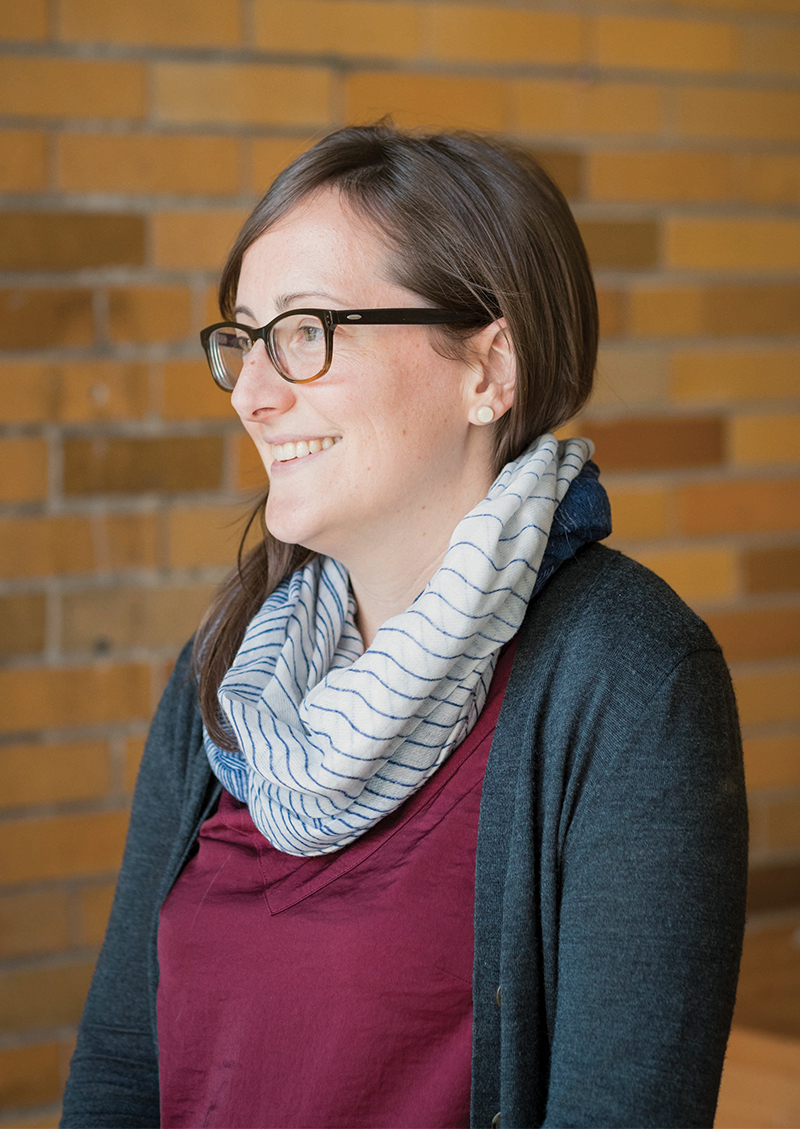Developing a Continuing Education Ecosystem

Anyone confused by people who seem welded to their electronic gadgets might want to pay attention to what Katie Theodoros, Director of Continuing Education (CE), has to say about keeping pace with technology.
“How people choose to spend their free time and money has changed drastically in the past decade, mostly because of the use of smartphones and the boom of the sharing economy. Places like NBSS that engage the general public must constantly work to create responses to the ongoing progress in technology and its effect on human behavior. It’s essential for audience development to stay in the forefront of our minds as we do future planning on the content of our classes and programs,” says Katie, who sees CE as a community of interacting organisms.
“A healthy ecosystem is balanced and consists of many different species and levels. The absence of any of these species affects the entire ecosystem. Thinking of CE as an ecosystem helps ensure that we are offering classes and programs that are appealing to the broadest community of learners.”
In CE, that includes middle- and highschool students, prospective School enrollees, empty nesters, and more. Katie—whose interests include knitting, sewing, woodworking, and bicycle repair—believes CE is important to the NBSS culture.
“It keeps some of our alumni connected to the School and it also brings in new people and ideas on a continual basis. It also showcases the work of our full-time students to people who come in to take classes or attend a program. A number of our full-time students took CE classes to get a feel for the School before applying,” explains Katie. “Our youth programs have also become an important part of the culture. For example, eight of our current full-time students take an hour out of their schedules to volunteer as assistants with our middle school classes. This not only provides full-time students with another learning opportunity, but also gives our middle school students a chance to work alongside people in the trades.”
Places like NBSS that engage the general public must constantly work to create responses to the ongoing progress in technology and its effect on human behavior.
Katie worked in printmaking after earning her BFA and later in museum education. After joining NBSS in the summer of 2015, she quickly brought about CE’s best year ever.
“The most important things that are keeping us on track are responding to the needs of students, keeping large amounts of information organized, and staying current with outside competition research. There are also a number of external factors that help. For example, most people have now recovered from the recession and the region’s population continues to grow.”
“This year, we saw the CE revenue grow, and I joked that the first year that we make $1 million in gross revenue, I’m going to throw a puppy party for everyone. And nobody would object, because we would have brought in $1 million,” laughs the animal lover. “I was not prepared for how quickly everyone jumped on board. I soon realized that a Million Dollar Puppy Party is a great way to keep us all working toward a shared goal.”
See our current Continuing Education offerings here.
This is one of nine program stories from the NBSS 2016 Annual Report. Download the full Report here, or see more issues on our Publications page.

